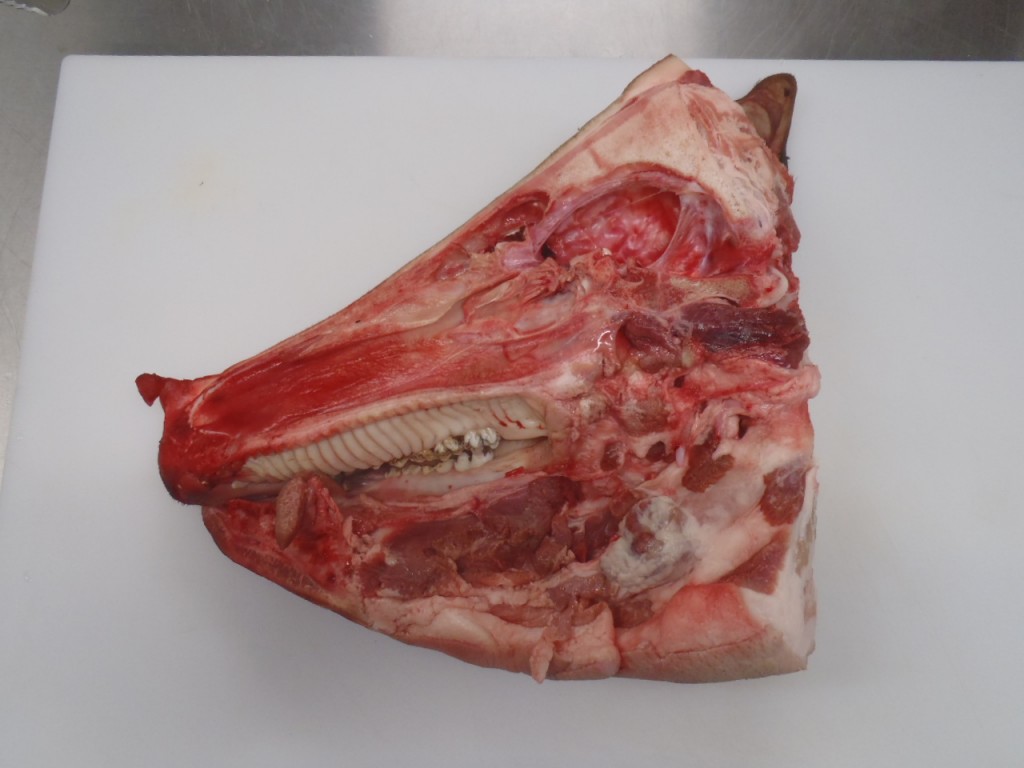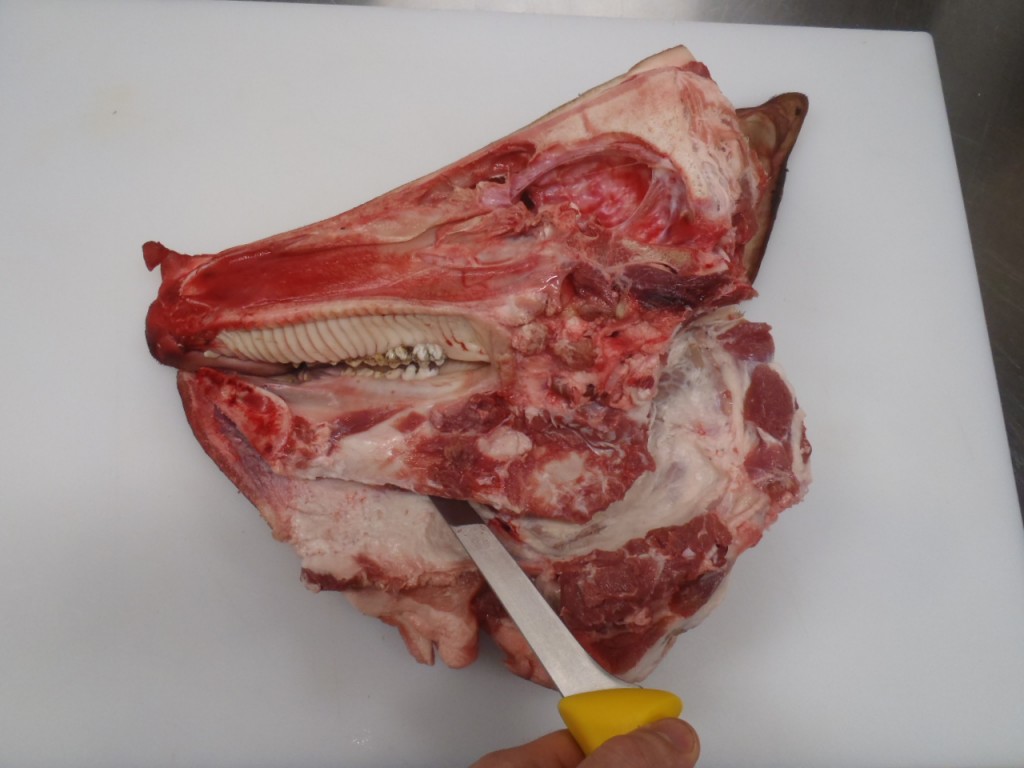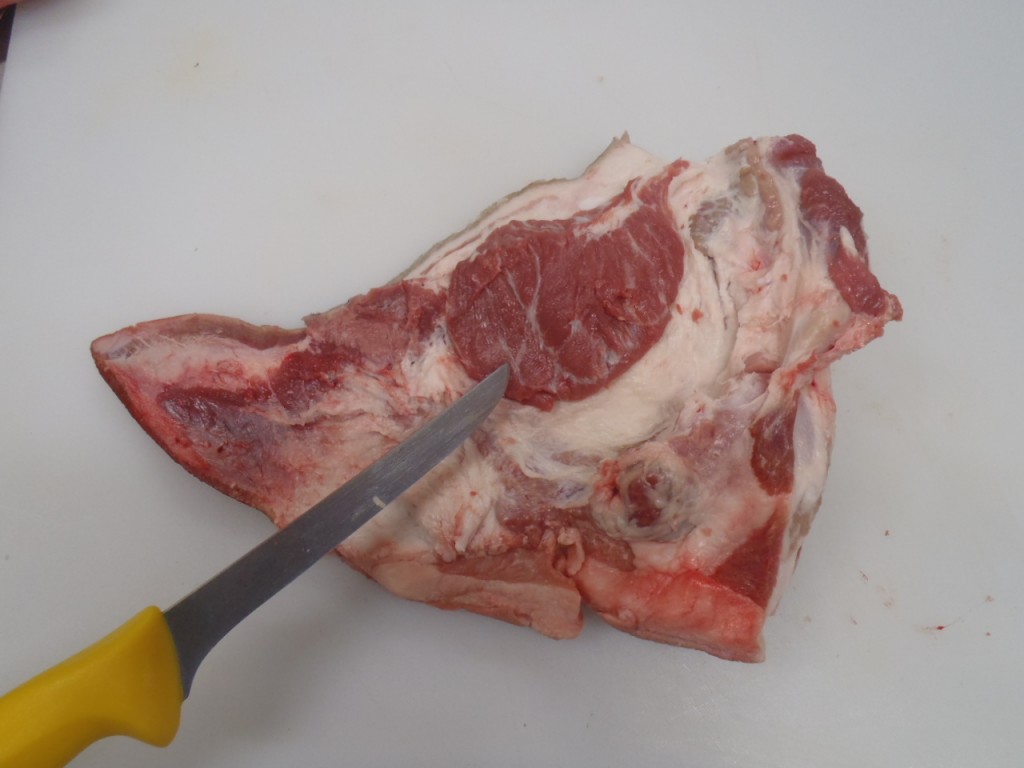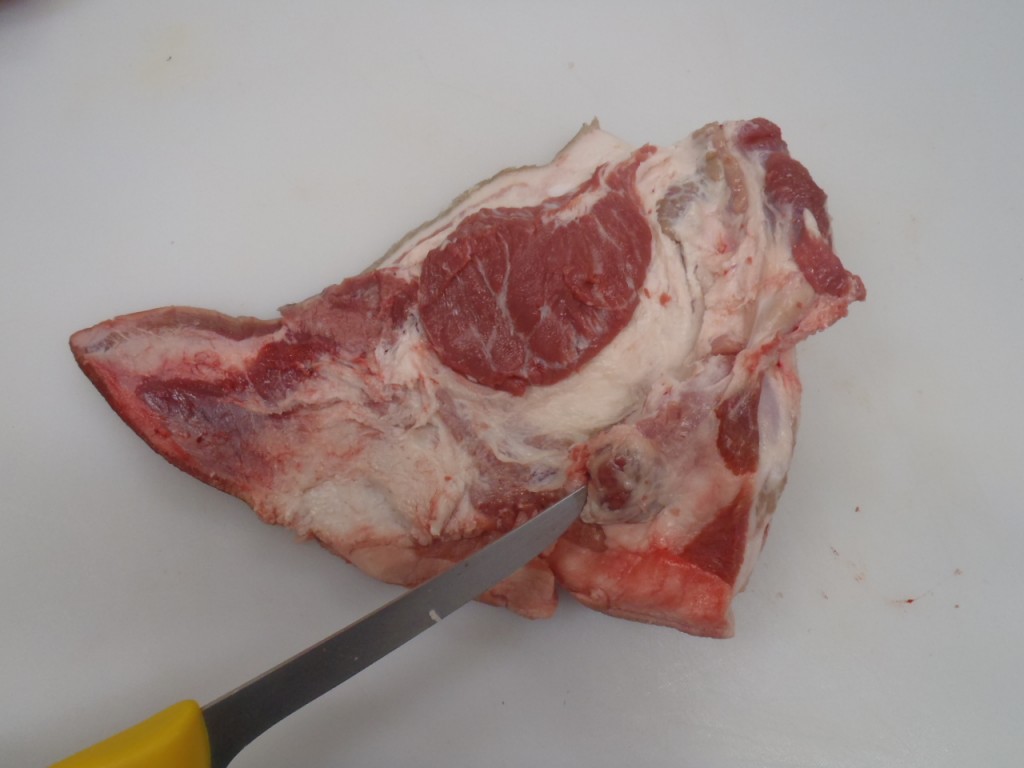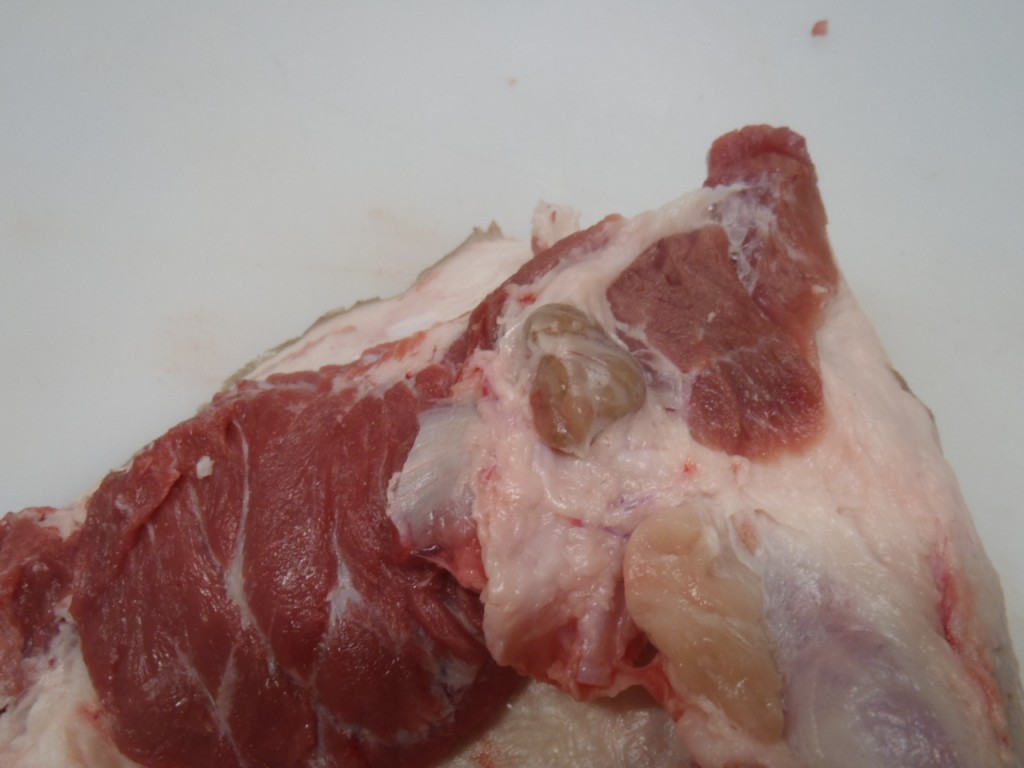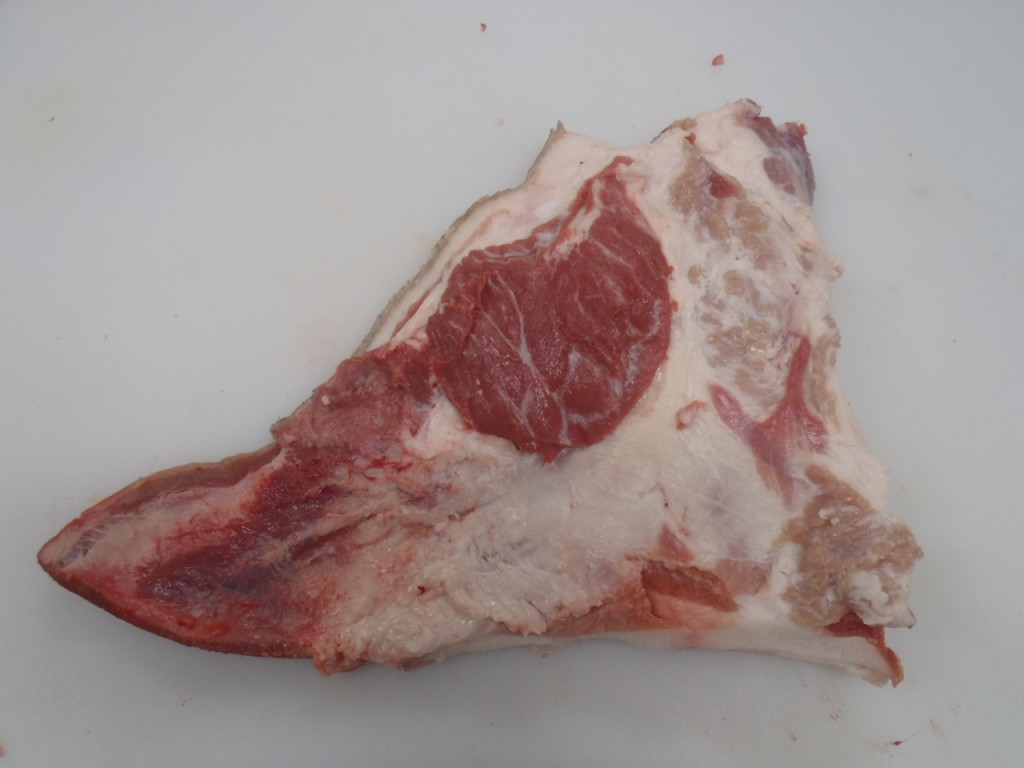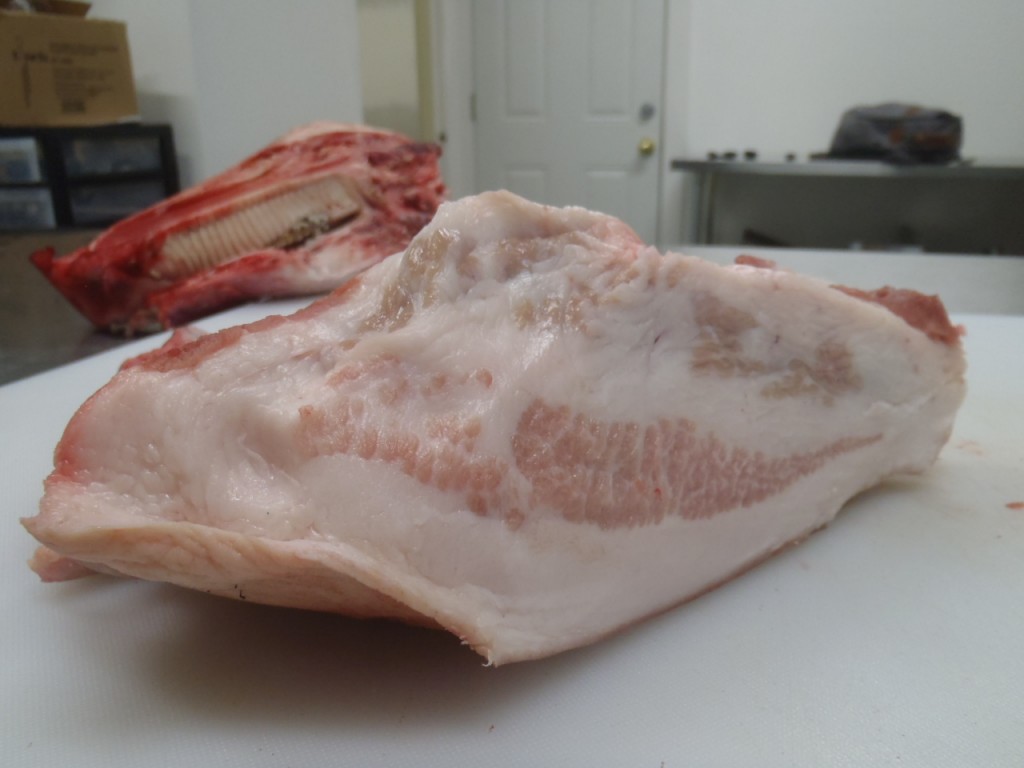So. This is the pig’s head. It is not a true primal cut, but deserves some special attention. I’ve written about a few preparations that involve cooking the head whole, either simmered to become headcheese, or roasted for its own simple enjoyment. This post will discuss cutting the raw head into its various constituents, namely the jowl and ear.
By far the largest piece of meat and fat on the head is the jowl. It is a gorgeous cut, very similar to bacon, though a bit fattier. I remove the jowl by following the jaw bone with my knife.
The meaty circle in the centre is the cheek muscle.
The main difficulty in dealing with the jowl is the numerous glands. There are two, sometimes three, large salivary glands (one is indicated below) and numerous lymph nodes that must be removed.
Another gland:
There is also some meat that has the same colour as glands, but is actually perfectly good meat. You can see it in the picture below, on the top right.
This profile shot shows the streaky, baconesque quality of the jowl. It is ideal for dry curing, and is considered a great binder in sausage force.
The only other significant meat sections on the head are right behind the ear (though we did our best to minimize this section when we separated the head from the shoulder) and at the temple, between the eye and ear. This last meaty pocket is easiest removed after the head has been cooked.
There are numerous other not-meat-but-still-edible parts of the head, including all of the skin, the snout, and the ear.
When cut in this manner the head yields:
- a jowl, to be cured like bacon, or added to sausage force
- an ear
- a skull for stock
